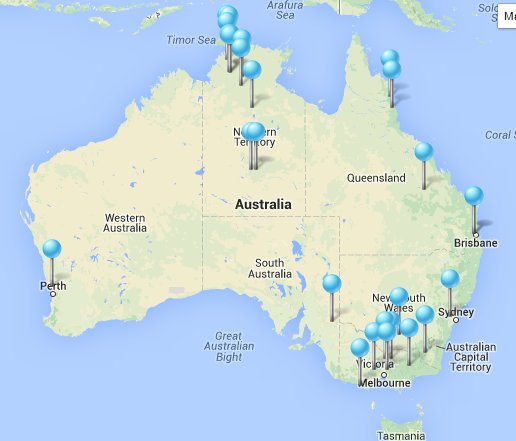OzFlux ecosystem flux data flowing freely


OzFlux is a network of towers around Australia continuously measures the exchanges (flux) of carbon dioxide, water vapour and energy between the terrestrial ecosystem and atmosphere. The network is supported a facility through the Terrestrial Ecosystem Research Network (TERN) and is a member of the global FluxNet community.
In the past, it could be difficult to find out what data existed and whether it was available for analysis, whereas different data collection, processing and formatting approaches created further challenges.
Thanks to the efforts of OzFlux members and project activities of TERN, this is now a thing of the past. Data from the OzFlux network of flux towers is now easily available and accessible from this portal. The data are organised into collections with each collection representing at least one site. Flux tower observations are currently available for 33 sites across Australia (see up to date map). The data are available for download under a TERN Data Licence that is similar to a Creative Commons license (see details here).
As this TERN article explains, “OzFlux provides a common set of core measurements at multiple sites and time scales to improve understanding of ecosystem function and biogeochemical cycles for use in ecosystem and land surface models. OzFlux data are being used to improve our understanding of the response of carbon and water cycles in Australian ecosystems to climate variability, disturbance (fire, insects), land management and future changes in precipitation, temperature and carbon dioxide levels. OzFlux is providing researchers with data to answer the following questions:
1. What are the key constraints to ecosystem productivity?
2. How resilient is ecosystem productivity in the face of climate change and variability?
3. What is the current water balance of the ecosystem and how will it change in future?
Answers to these questions are central to informing land management and climate adaptation and mitigation policies.”
This other TERN article points out some of the many examples of valuable research applications:
“Data from the Howard Springs and Tumbarumba OzFlux sites were used in a recent international study into understanding the interactions between climate change and soil carbon storage. The sites were chosen as two of twelve study sites from six countries around the world.
Data from these two sites were also used in two separate investigations recently featured in a special issue of the Agricultural and Forest Meteorology journal released earlier this month. Tumbarumba data were used to investigate the effects of climate variability on forest carbon exchange, and Howard Springs data to explore the link between clouds, radiation, and canopy productivity of tropical savannas.
Another study used data from the Wallaby Creek OzFlux site to investigate carbon and water exchanges in the world’s largest angiosperm (flowering plant) forest in Victoria. Data from the Alice Springs OzFlux site was used to analyse the seasonal patterns and responses of water and carbon fluxes to rainfall events in Acacia savanna woodlands.”
You can find a more complete list of recent publications using OzFlux data here.
